Bottom Up Synthesis of CHS Project
Written by Tyler Prestly, Madi Purrenhage, Faisal Shariff, and Michael Yu
After the creation of our gallery wall, the next step in our innovative problem solving process was to look for insights and patterns in the information we had collected. To look for patterns, we tried to clump together insights that occurred two or more times. The following are criteria with which we tried to look at the patterns and then a list of the patterns themselves.
For Each Pattern We Asked:
- Is it a true pattern?
- What is surprising or interesting?
- Was this an unexpected or supported behavior?
PATTERN ANALYSIS
*** Image depicts our initial observation of patterns, further progress was made upon these.
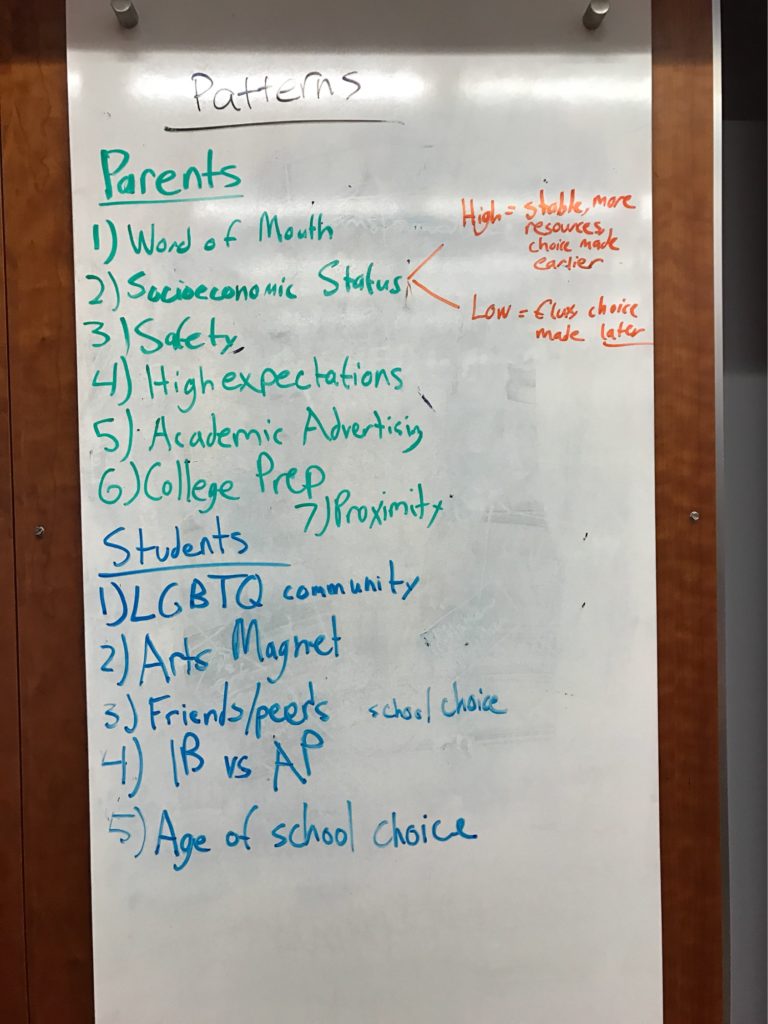
- Word of Mouth is essential in the HS decision making process for students and parents alike.
- Parents begin talking about the schools when their children are at a young age
- According to Maria C., and various discussions with current Clay students
- Jackson Jones, for example, was mostly influenced by his father’s fandom of Clay athletics and knew he’d attend Clay since childhood.
- Parents are highly influenced by what their friends and colleagues do
- Sophia’s father worked at ND and all of his fellow ND professors sent their children to Adams, so he did too.
- Students will also follow where their friends go, like Jackson Jones and David Weaver.
- According to Maria C., and various discussions with current Clay students
- Parents begin talking about the schools when their children are at a young age
- Socioeconomic status is a significant variable in school choice and approach.
- Based on discussions with Maria C., parents from each spectrum
- High = More financially stable, more resources/wherewithal, agency -> High School Choice made EARLIER(early in a child’s life)
- Low = Flux, fewer resources, less agency -> High school Choice is made later
- Based more on transportation, safety, who they know
- Want to be able to make the decision based on academics, but can’t always afford to do so
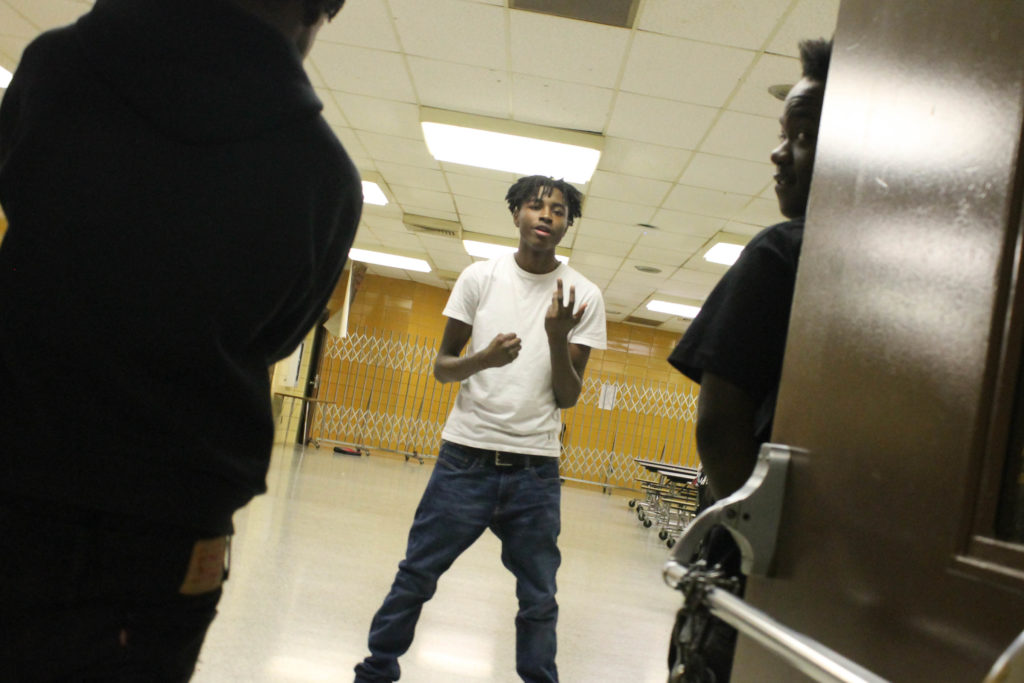
- Safety: Every parent wants their children to be safe.
- Clay has been known in the past to be unsafe do to the students who attend
- Principal Eid himself talks about the number of expulsions, which can be seen as a positive (Commitment to safety) and a negative (high rate of expulsions = high amount of dangerous students).
- Students themselves also care about safety:
- Sophia B. gave us the insight that Adams is not dramatically safer than Clay. “I was threatened my freshman and sophomore year at Adams… girls told me they were going to cut me.”
- Adams just has a better reputation for safety, and Clay is slowly improving theirs.
- Maria C.: “Fights do occur at Adams too”
- User survey: “I feel safe on campus” led to a score of 3.45/5
- In a world of instant access to media, this has become more important and more of a problem (negative press -> less students choosing Clay)
- Community: Parents want their children to be in a supportive, familial environment with a good energy.
- McKenna: “When I walk through the halls, I don’t want to see a bunch of students being disciplined. I want to see students and staff being able to interact, joking around, having fun, laughing.”
- Sue: “When everything’s going smoothly you don’t have as much need for support, but when you have a couple challenges, we’ve had good support from the guidance office and the teachers.”
- High Expectations: Parents want their children to reach their full academic potential.
- Based on discussions with various parents and professors
- Parents want the school to be challenging
- Parents want the teachers to support and push their children to achieve
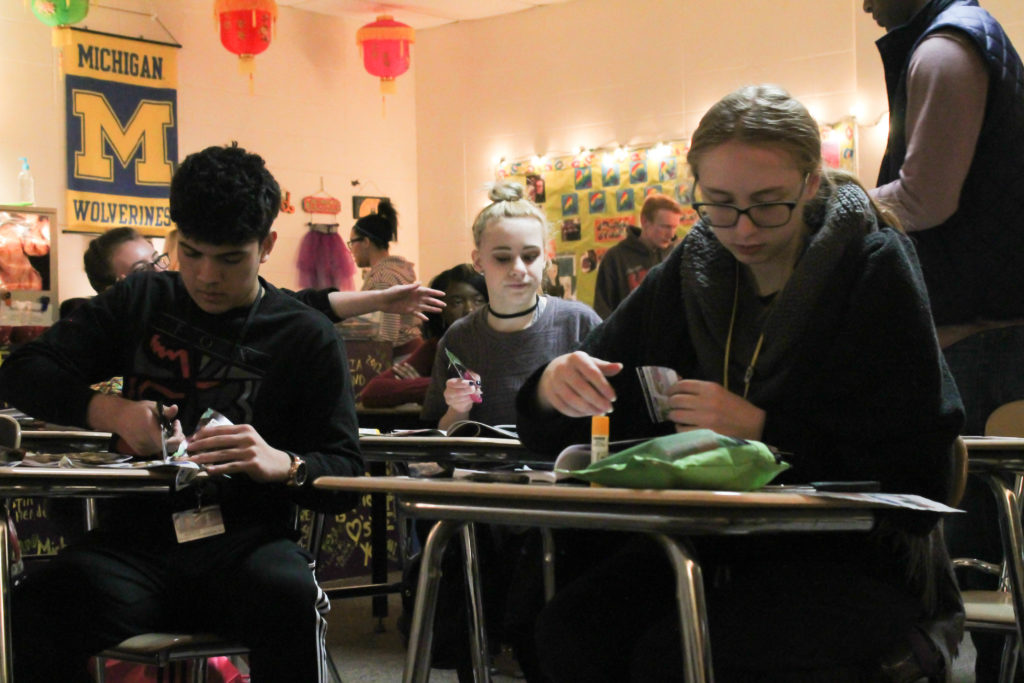
- Based on discussions with various parents and professors
- Academic Advertising is weak: People think Clay doesn’t have strong academics, and they have not adequately addressed their academic offerings in their marketing.
- The current marketing materials that Clay has does not have much information on the AP/Dual Credit offerings
- SBSC, in the past, restricted them from doing focusing on anything else but the “Arts Magnet”
- But in reality Clay has one of the best AP/Dual credit course offerings in the area
- The current marketing materials that Clay has does not have much information on the AP/Dual Credit offerings
- Importance of College Prep – parents and students alike think it is important that a school prepare them to attend college.
- This trends more among adults and self-motivated students
- Adams sends people to Ivy League, Clay does not
- Students like Momin M. made Adams as their school of choice because of how an IB diploma would look to colleges
- Misconception about college acceptance from Clay (62%-> 4 year colleges)
- The CTE program is an advantage, but parents need to see college prep too.
- Where to find information is a complex issue.
- Maria C. expert conducting research on school choice, believes that a big part of the problem is people don’t have the proper information/know where to find it.
- People receive their information from a variety of places
- There is not an established path or method that parents or students know, the process is more nebulous and flowy

- Currently the Arts Magnet name provides value in:
- Students rank it as an important part of the school
- Potential for enhancement of school spaces
- It diversifies Clay’s offerings
- Education trend towards realizing the potential of art -> Improves outcomes in science and math.
- Detracts value in:
- Weaker academics and athletics
- Having a hard time with the academic elements
- Currently the Arts Magnet name provides value in:
- Diversity is a strength of Clay High School
- Probably one of the most ethnically diverse student bodies amongst high schools in the area
- This is beneficial because it is a place where other minorities can feel comfortable and safe
- Additionally, it enriches the learning environment with unique perspectives and backgrounds
- AP vs. IB should influence the academic perceptions of both schools among the community
- Clay’s listing of AP courses is not widely known.
- Not mentioned in the SBSC pamphlets to prospective students and parents
- Clay has the most amount of AP programs and is continuing to grow.
- Adams may offer the IB program, but few end up with the diploma
- Maria, Sophia: “Many enter the IB program, but very few end up completing (only about 15 or so in their year)
- AP program is more valuable since having those individual credits can help their college experience more than an incomplete IB track
- Admissions offices have noted that they value AP course credits as much as IB diplomas
- Clay’s listing of AP courses is not widely known.
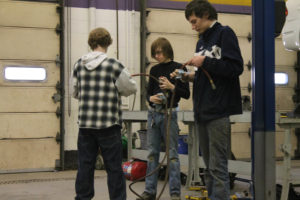 CTE is highly successful in preparing students for full time careers.
CTE is highly successful in preparing students for full time careers.
- CTE programs have helped students like David Weaver find their place at school in these classes, and go onto reliable jobs after graduation.
- Discussion with Auto Shop teacher: Students have gone onto jobs at local auto shops, with little need for job training
- Making them more attractive candidates for the job
- One former student has even been able to find a position at Ford Motors, and has been a major success story for the program
- Discussion with Auto Shop teacher: Students have gone onto jobs at local auto shops, with little need for job training
- Clay has the most diverse listing of CTE programs compared to the other three schools in the district.
- One of the upper hands Clay has on the others
- Main reason why students like David W. chose Clay.
- Marketing these listings better to students who may not be academically minded may be able to attract students from other high schools to focus on CTEs as their priority
- One of the upper hands Clay has on the others
- CTE programs have helped students like David Weaver find their place at school in these classes, and go onto reliable jobs after graduation.
- There’s significant pushback from the school district in Clay’s efforts.
- As seen with marketing decisions, lack of help on school image, promoting Adams as the “academic school”, etc.
- Efforts will have to rely more on Clay’s resources, rather than what the district can do for Clay.
- School district may not be a partner in the final solution.
- Distance is a dealbreaker for some, but is manageable for most.
- In the user survey, 16 students “strongly agreed” with the fact that they chose this school because of how close they live to Clay.
- However, the survey average was a 2.35 out of 5, which suggests that distance is not a factor for most students.
- As long as transportation is provided, students like those leaving the Clay district to attend Adams are willing to take a longer trip to go to the school of their choice.
- The solution should look to target a broad swath of students for the entire South Bend area, not necessarily those from the immediate neighborhood.
- Lack of school pride and attractions makes word of mouth harder
- Discussions with various students on campus note the community, the arts magnet as their favorite things about the school
- User survey: “I am proud to be a Clay Student” results in a 3.6/5.
- Immersions, however, identify that all of this is restricted to inside the classrooms, and stops in the hallways. Campus is very bland.
- Immersion experiences point to a restrictive environment, with constant overwatch.
- Student to student interaction between classes highly discouraged
GUIDING PRINCIPLES
After identifying important and valid patterns, the team looked through them and prioritized the most important factors. These important factors play into the guiding principles, or the tenants that provide the highest level of direction and organization for concepting.
About Clay and What People Value:
- I need to feel safe in my school.
- The perception exists that CHS is a bad choice/unsafe/does not provide value.
- This is untrue, and proving it incorrect is core to our solutions, it encompasses the whole issue we are trying to address.
- Parents care about the safety of their children.
- Joyce – a low income mother of 2. Said she “ain’t got time for her kids to be bullied.”
- Prof Maria would have sent her kids there if they had wanted to go

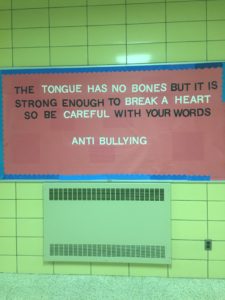
“But if I had a choice, I would have put them in Clay. It was the most impressive in terms of the full package – arts, athletics, caring community, and dual credits. My kids chose something different because their friends chose something different, which we respected and were fine with.”
- I value the Arts when choosing a school.
- Students value the arts magnet.
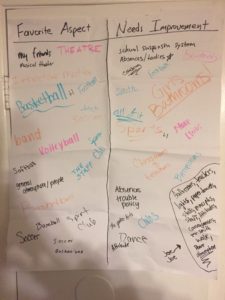
- On our graffiti wall, many students noted that the magnet and the arts were important reasons for their HS decision.
- Students value the arts magnet.
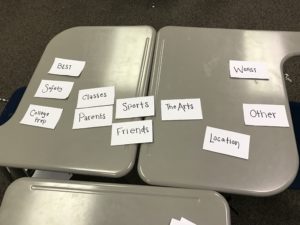 The Card Sort and User Survey also provided insight that the magnet matters.
The Card Sort and User Survey also provided insight that the magnet matters.
- It was listed as important countless times on the user survey and in the card sort.
- The arts provide value beyond art itself.
- The students could create and build a school that looked like an arts magnet.
- Well-rounded diversified student interests.
- Studying art helps students to more effectively learn math and science.
- “They are very focused on them and have tons of opportunities with the Magnet” – Laura

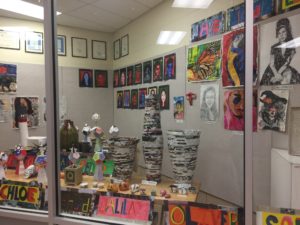
3. Academics are of top importance in my school choice.
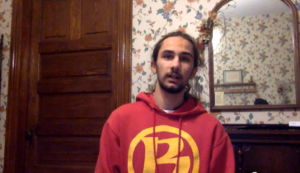
- “Some of the decision was based on the fact that IB diploma would look best to colleges” – from an interview with Momin Mirza
- IB vs. AP
- There is currently a misconception about the value of IB and AP. This misconception leads to the perception that Clay doesn’t provide as much value.
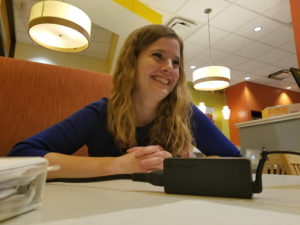
- “Clay isn’t known to have a lot of high academic rigor, and that was more important to me than the arts. Arts are supplemental, academics was the focus for my family.” – from the interview with Maria Caponigro
- There is currently a misconception about the value of IB and AP. This misconception leads to the perception that Clay doesn’t provide as much value.
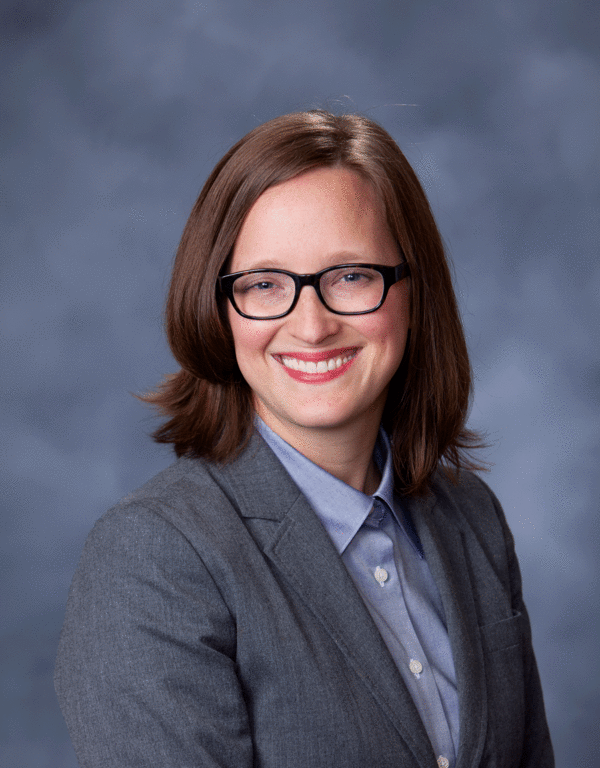 “The academic element is essential, and the structure for her kids to learn.” – from the interview with Professor Jenny Martin
“The academic element is essential, and the structure for her kids to learn.” – from the interview with Professor Jenny Martin
- Parents want their children to be pushed to their potential
Appeal to me by Word of Mouth.
- Influences on the Decision: Word of Mouth, Reputation, and School Pride
- In order to drive enrollment, we had to look at what influenced the High School Decision… from our research we are focusing on the three tenets listed above.
- Important Insights:
- Students are choosing schools based on where friends go
- Parents are choosing schools based on where other parents send their children (Word of Mouth).
- “Parents pick schools based on word of mouth, based on what their friends say” “Choosing a school in South Bend is like a game of telephone” – Professor Maria McKenna
- In order to improve Word of Mouth, you have to influence school reputation.
- Marketing Matters. Recreating the Story – the marketing materials, building bridge with middle school.
- Specialist at IDEO recommended that when addressing marketing we try and tell a story and identify what story CHS should be telling.
DESIGN CRITERIA
Design Goal:
- What have we learned about target customers?
- Diverse needs: socioeconomic, ethnic, sexual orientation
- Care about quality of schooling(staying on track), safety, keeping students out of trouble
- Design needs to show parents that Clay High school can provide what they are looking for, that Clay is a good choice and will benefit their children. That Clay is as good if not better than other schools in the area.
- After the analysis of our target market, we believe that our target market should be students as opposed to parents.
- This means both high school students and middle school students and we will approach our solutions to these groups in different ways.
- Additionally, there are smart students who currently live in the CHS neighborhood and bus to Adams, addressing those students will be a future focus.
- User Perceptions?
- Word of mouth
- CLAY’s identity is extremely important
- Needs to be defined and spread throughout the school and the corporation, they need to lean on this to attract students
- Diverse, good academics, safe, Artsy = well-rounded
- Proposed offering is extremely important, it could benefit them by giving them piece of mind that their children are in good hands, on the right track, and receiving a quality education
- Aesthetic attributes: Brochure needs to look nice, Clay High school facilities need to be spruced up a little (i.e. locker painting)
- HUGE reputational aspects
Problems/Needs/Opportunities:
- Preferred outcome is that their children graduate, are on track and prepared for whatever route their future is going down(college, workforce, etc.)
- Paint points:
- Lack of knowledge/awareness of Clay High School’s offerings, benefits, positive characteristics: about why Clay is good.
Functional Attributes:
- Does the design of the offering need to accommodate specific scenarios?
- There are a variety of variables that will play into the final offering, and as such, the offering is not expected to have to adapt to every single student.
- However, the end offering will try to impact and influence students who are artistic, academic, athletic, and a whole slew of other character traits. We hope that it will appeal to a large variety.
- Does the design need to address specific compatibility or standard issues?
- If the end design involves an upgrade to CHS marketing materials, we will have to ensure compatibility among the current and future materials.
- We will also have to ensure compliance with SBSC.
- We will also have to address compatibility with current programming at the school. If we recommend a variety of engagement techniques for middle school students we will need to ensure our recommendations are compatible with the current situation.
Constraints:
- What are the confines of our project work? What limitations might there be?
- Ideally, we would change the whole way that students and parents approach school choice… and innovate on the system itself.
- However, there are a variety of limitations that we foresee.
- Clay is starting from behind in terms of attracting academically high achieving students. Adams has the advantage here of precedent, legacy, current situation. Adams has smart students and continues to attract more smart students because of that. Clay has some high achieving students but struggles to attract more (80 of its smartest students are bussing to Adams every morning). These students are KEY to breaking this cycle and making lasting change.
- Obviously there are going to be budgetary constraints. CHS receives funding per student, 6600 vs. 11,000 per student in Penn-Harris-Madison District because of property tax disparity.
- Limitations based on the fact that the SBSC seems to favor Adams
- Constraints on our ability to academically advertise